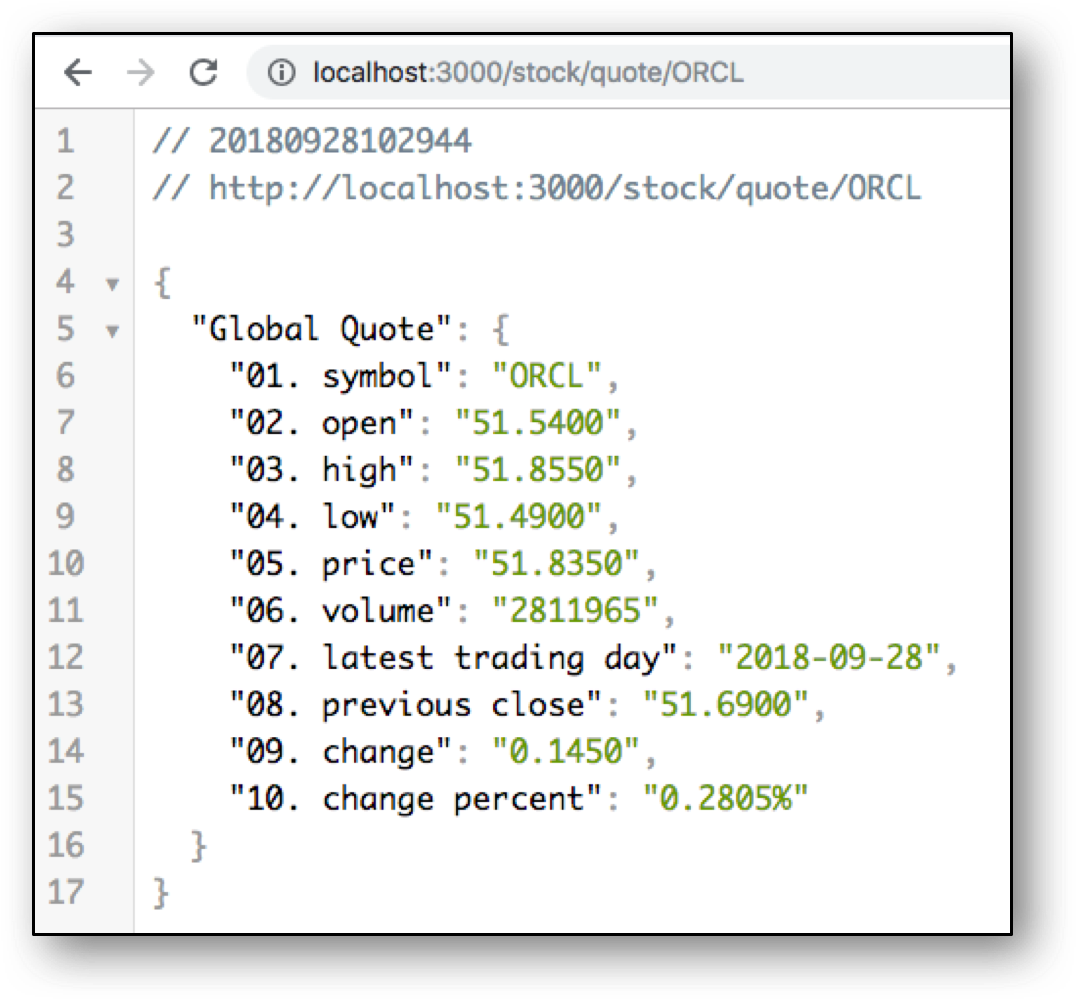Microservices From Dev To Deploy, Part 2: Node/Express and Fn Serverless
Posted By: Todd Sharp on 10/5/2018 1:08 GMT
Tagged: Containers, Microservices, APIs, DevOps, Developers, Java, JavaScript, Open Source

In our last post, we were introduced to a fictional company called TechCorp run by an entrepreneur named Lydia whose goal it is to bring back the world back to the glory days of the internet homepage. Lydia’s global team of remarkable developers are implementing her vision with a microservice architecture and we learned about Chris and Michiko who have teams in London and Tokyo. These teams built out a weather and quote service using Helidon, a microservice framework by Oracle. Chris’ team used Helidon SE with Groovy and Michiko’s team chose Java with Helidon MP. In this post, we’ll look at Murielle and her Bangalore crew who are building a stock service using NodeJS with Express and Dominic and the Melbourne squad who have the envious task of building out a random cat image service with Java Oracle Fn (a serverless technology).
var express = require('express');
var router = express.Router();
var config = require('config');
var fetch = require("node-fetch");
/* GET stock quote */
/* jshint ignore:start */
router.get('/quote/:symbol', async (req, res, next) => {
const symbol = req.param('symbol');
const url = `${config.get("api.baseUrl")}/?function=GLOBAL_QUOTE&symbol=${symbol}&apikey=${config.get("api.apiKey")}`;
try {
const response = await fetch(url);
const json = await response.json();
res.send(json);
} catch (error) {
res.send(JSON.stringify(error));
}
});
/* jshint ignore:end */
module.exports = router;

schema_version: 20180708 name: cat-svc version: 0.0.47 runtime: java build_image: fnproject/fn-java-fdk-build:jdk9-1.0.70 run_image: fnproject/fn-java-fdk:jdk9-1.0.70 cmd: codes.recursive.cat.CatFunction::handleRequest format: http config: apiBaseUrl: https://api.thecatapi.com/v1 apiKey: [redacted] triggers: - name: cat type: http source: /random
public class CatFunction {
private String apiBaseUrl;
private String apiKey;
@FnConfiguration
public void setUp(RuntimeContext ctx) {
apiBaseUrl = ctx.getConfigurationByKey("apiBaseUrl").orElse("");
apiKey = ctx.getConfigurationByKey("apiKey").orElse("");
}
public OutputEvent handleRequest(String input) throws UnirestException {
String url = apiBaseUrl + "/images/search?format=json";
HttpResponse<JsonNode> response = Unirest
.get(url)
.header("Content-Type", "application/json")
.header("x-api-key", apiKey)
.asJson();
OutputEvent out = OutputEvent.fromBytes(
response.getBody().toString().getBytes(),
OutputEvent.Status.Success,
"application/json"
);
return out;
}
}
fn deploy --app cat-svc –local
curl -i \ -H "Content-Type: application/json" \ http://localhost:8080/t/cat-svc/random
HTTP/1.1 200 OK
Content-Length: 112
Content-Type: application/json
Fn_call_id: 01CRGBAH56NG8G00RZJ0000001
Xxx-Fxlb-Wait: 502.0941ms
Date: Fri, 28 Sep 2018 15:04:05 GMT
[{"id":"ci","categories":[],"url":"https://24.media.tumblr.com/tumblr_lz8xmo6xYV1r0mbi6o1_500.jpg","breeds":[]}]
Related Posts

Querying Autonomous Database from an Oracle Function (The Quick, Easy & Completely Secure Way)
I've written many blog posts about connecting to an Autonomous DB instance in the past. Best practices evolve as tools, services, and frameworks become...

Sending Email With OCI Email Delivery From Micronaut
Email delivery is a critical function of most web applications in the world today. I've managed an email server in the past - and trust me - it's not fun...

Brain to the Cloud - Part III - Examining the Relationship Between Brain Activity and Video Game Performance
In my last post, we looked at the technical aspects of my Brain to the Cloud project including much of the code that was used to collect and analyze the...